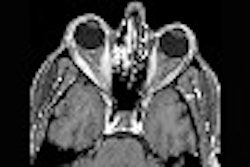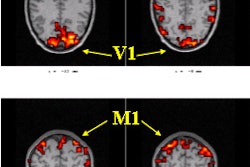With last year’s well-publicized MR projectile death still fresh in mind, the American College of Radiology has issued some very detailed new guidelines on magnetic resonance safety. But not all of the college’s suggestions have been universally acclaimed.
The "ACR White Paper on MR Safety" in the June issue of the American Journal of Roentgenology is a significant enhancement and revamping of the college’s previous monograph on MR safety (AJR, June 2002, Vol.178:6, pp.1335-1347).
For those performing MRI, the new white paper gives more direction than the previous documents on how to implement the Reston, VA, society’s recommended safety program.
"The most important thing we’ve got here is one document that can serve us as a template for MR safety," said co-author Dr. James Borgstede, chairman of the ACR's Patient Safety Task Force and director of ultrasound at Penrose St. Francis Health System in Colorado Springs, CO. "We even give a model questionnaire (for identifying patient safety issues) that can be used in a site."
Notable new advice in the white paper includes "zoning" the MR suite to ensure that only appropriately trained personnel are working closest to the magnet. However, that advice was questioned in an accompanying commentary, written by MRI safety consultant Frank Shellock, Ph.D., an adjunct professor of radiology at the University of Southern California, and USC radiologist John Crues III (AJR, June 2002, Vol.178:6, pp.1349-1352).
"The concept of designating various zones to help control site access relative to the static magnetic field of the MR system, although interesting, has no precedent in the MR imaging literature, nor empiric support for its usefulness in preventing MR imaging-related accidents," the commentators wrote. "Importantly, the zoning of the MR environment as proposed in the ACR white paper is not intuitive and, thus, may be confusing to MR personnel and/or impractical to implement."
Another section of the paper drew stronger criticism from Shellock and Crues.
"We disagree with the ACR white paper's suggestion that nonemergent patients should be screened by ‘a minimum of two separate individuals’ and that emergent patients may be screened only once," they said. "In fact, in the clinical MR setting, it is uncommon and probably unnecessary for a patient to be screened by two different individuals, especially if the screening process is thorough and involves written and verbal evaluations."
The commentators also questioned the publication's suggestion that facilities use a strong handheld magnet to test patient devices or implants: "In our opinion, MR healthcare professionals may not want to be responsible for MR testing of equipment and implants, nor is this really necessary."
"Many commercially available patient-support devices and accessories have already undergone such evaluation (which are designated as MR-safe or MR-compatible using red labels), and there is MR-safety or MR-compatibility information available for more than 950 implants. This information is readily available online to all MR users," the commentators pointed out.
On a lesser note, the commentary also chastised the white paper for failing to credit the original sources for recommendations on preventing thermal injuries. Among the missing citations were apparently four publications by Shellock, including two he co-authored with the University of Pittsburgh’s Dr. Emanuel Kanal, the lead author on this ACR white paper.
Borgstede declined to respond to any criticisms raised in the commentary, noting that a formal response would be published in AJR in the next few months.
The publication comes nearly one year after the death of a child during MR imaging at a Valhalla, NY, medical center. The sedated youngster was killed by a ferromagnetic oxygen tank that was drawn into the 10-ton magnet. One recent journal article acknowledged that similar MR "missile" or projectile accidents have occurred at many facilities, though generally causing damage to scanners rather than injury to patients or others (AJR, July 2001, Vol.177:1, pp. 27-30).
"With more exams being performed and more gravely ill people being brought into magnets, safety is something that needed to be brought to everyone’s attention," said ACR associate executive director Marie Zinninger. "We were trying to get ahead of the curve. The number of incidents is small compared to the 18 million MR exams performed each year."
By Tracie L. ThompsonAuntMinnie.com contributing writer
June 25, 2002
Related Reading
Pocket Guide to MR Procedures and Metallic Objects: Update 2001, June 24, 2002
Pillow proves potentially perilous in MR procedure, September 26, 2001
Of missiles and metallic objects: How to avoid MRI-related hazards, August 21, 2001
Healthcare safety institute issues MRI precautions, August 14, 2001
MR accident results in child’s death, July 31, 2001
Copyright © 2002 AuntMinnie.com



.fFmgij6Hin.png?auto=compress%2Cformat&fit=crop&h=100&q=70&w=100)




.fFmgij6Hin.png?auto=compress%2Cformat&fit=crop&h=167&q=70&w=250)











